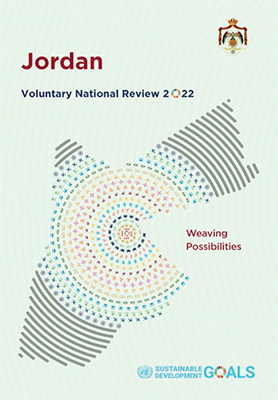You are here
Report gauges quality of healthcare services in Jordan
By Mays Ibrahim Mustafa - Aug 19,2023 - Last updated at Aug 19,2023

AMMAN — The quality of healthcare services in Jordan is generally “low”, especially in the public sector, according to research published by The Arab NGO Network for Development (ANND).
Its report, issued on July 3, is titled “Facilitators and Barriers to Realizing the Right to Health in Jordan”.
It pointed out that although Jordan “has achieved remarkable progress in many health indicators”, various economic and social challenges in recent years have hindered its efforts to fulfill the right to health for citizens.
‘Gaps in the quality of health services’
The report observed that recent years have witnessed a “noticeable decline” in the quality of healthcare services in Jordan due to various factors.
It stated that the public sector is unable to match Jordan’s population increase and refugee influx by establishing or expanding health facilities, “especially in peripheral areas”. This has led to increased pressure on health facilities, which are marked by overcrowding and long-waiting periods.
The emergence of new epidemics and the re-emergence of old ones has also led to increased pressure on health facilities, according to the report.
There’s also a shortage of qualified and specialised medical staff in the governmental, military and the public health sectors, amid growing demand, it added.
Moreover, the Kingdom is dealing with brain drain in the healthcare sector, evident in the high turnover rates and resignations in search of better job opportunities with higher salaries in the Gulf Cooperation Council (GCC) countries, the US, or Europe, the report noted.
“Accordingly, the Jordanian health sector is constantly forced to recruit, qualify and train newly graduated professionals at an additional cost to the health budget,” it added.
Other gaps in the quality of health services listed in the report include the “frequent shortage of some types of medicines and medical supplies”, the “inadequate use of telehealth technologies” and the “absence of follow-up mechanisms for medical referrals”.
Uneven access to healthcare
“While most Jordanians enjoy a wide range of health services, coverage and accessibility are still limited and uneven, especially among the most marginalised and lowest-income groups,” the report stated.
Its findings indicated a disparity in access to healthcare between urban and rural areas, and between different regions in the Kingdom due to the uneven distribution of financial and human resources.
Gaps in legislation
The report said that there is no explicit mention of “the right to health” in the Jordanian constitution and its amendments.
“Experts believe that the legislative authorities’ failure to explicitly stipulate that the state guarantees the ‘right to health’ for its citizens may be linked to its fear of incurring a cost it may be unable to meet,” it noted.
Financial challenges
Funding challenges are among the main impediments to the realisation of the right to health in Jordan, according to the report.
It showed that the Kingdom spends more than 9 per cent of its gross national product (GNP) on health. However, “the sector is still in dire and clear need of more funding to help it” deal with the increasing demand and keep pace with the “enormous” rise in healthcare costs globally.
The “largest share of the government budget for health is spent on current expenditures”, including salaries, wages, and social benefits for the staff of the Ministry of Health. On the other hand, capital expenditures account for less than 10 per cent of the budget, it added.
Progress in health-related SDGs
The report cited the findings of Jordan’s second voluntary national review (VNR) in 2022, which overviews the government’s achievements in SDG indicators.
The VNR pointed to the accomplishment of several indicators related to SDG 3, related to “Good Health and Well-being”.
The under-five mortality rate decreased from 21 per 1,000 live births in 2012 to 19 per 1,000 live births in 2018, which is within the global goal of less than 25 deaths per 1,000 live births, according to the report.
It also stated that the maternal mortality rate in Jordan stood at 38.5 per 100,000 live births in 2020, compared with 19 in 2015. However, this is still within the objective of less than 70 maternal deaths per 100,000 live births.
The percentage of births supervised by skilled health professionals in Jordan amounted to 83 per cent in 2020, which is within the global target, it added.
Related Articles
AMMAN — According to Jordan’s Second Voluntary National Review (VNR), which measures the country’s progress in implementing the 2030 Agenda
AMMAN — The percentage of children under five who are overweight rose to 9 per cent in 2023 compared to 4 per cent recorded in 2012, accordi
AMMAN — Jordan ranks 72 worldwide and fifth in the MENA region on the Sustainable Development Goals (SDG) index report.

















